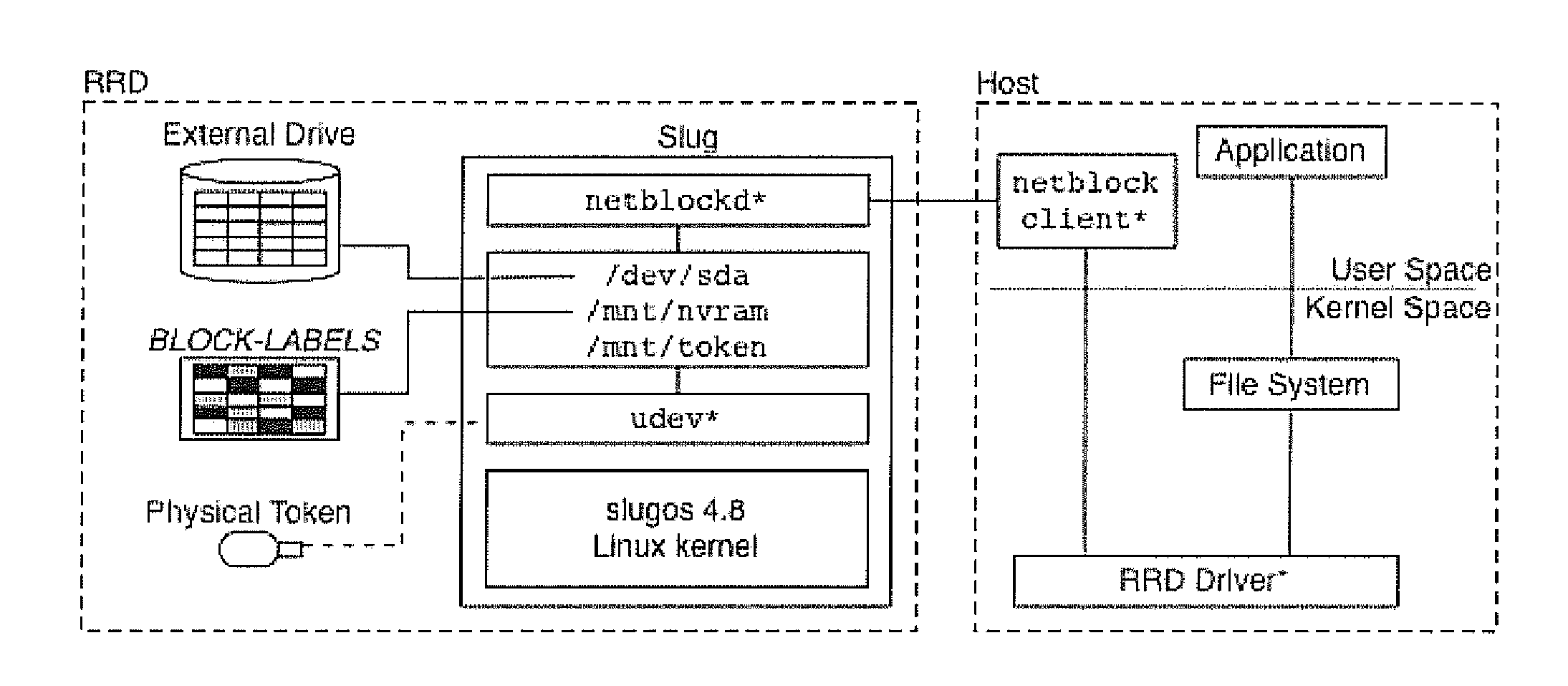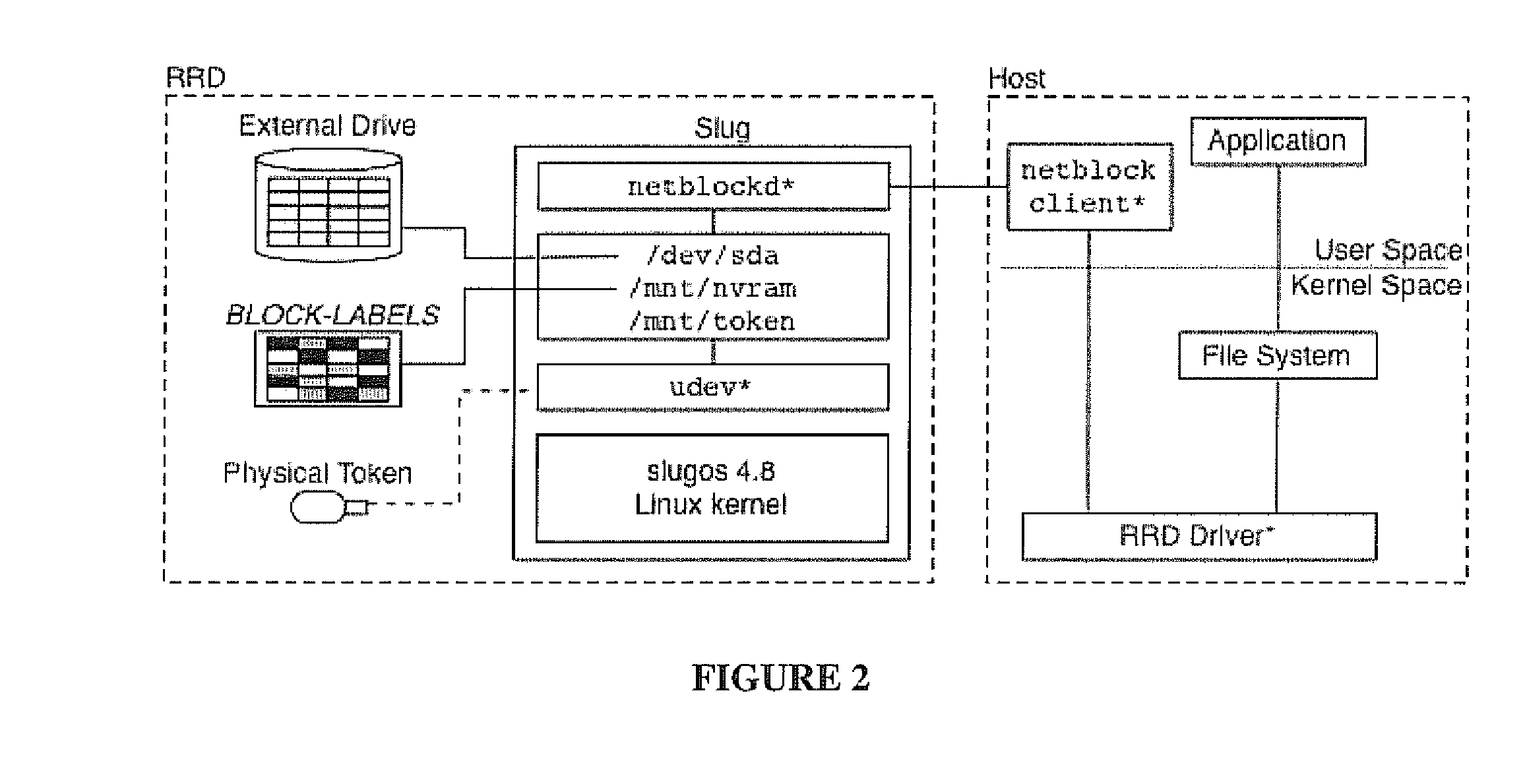Rootkit-resistant storage disks
a technology of storage disks and rootkits, applied in the field of computer malware, can solve the problems of unable to securely remove, inability to make the system impervious to rootkits, and inability to place unreasonable restrictions on their operation, so as to avoid the often high overhead and safe boot the system
- Summary
- Abstract
- Description
- Claims
- Application Information
AI Technical Summary
Benefits of technology
Problems solved by technology
Method used
Image
Examples
Embodiment Construction
[0021]In this disclosure, we present the design and analysis of a rootkit-resistant disk (RRD). The system architecture, implementation, and evaluation are detailed and design alternatives that enable performance and security optimizations discussed. A version of the RRD was implemented on a Linksys NSLU2 network storage device [33] by extending the I / O processing on the embedded disk controller and using USB flash memory devices for security tokens. Our implementation integrates label and capability management within the embedded software stack (SlugOS Linux distribution [50]). We further extend the host operating system kernel and installation programs to enable the use of the non-standard RRD interfaces and security tokens: however, in practice, modifications to host operating systems will not be needed.
[0022]Our performance evaluation shows that the RRD exhibits small performance and resource overheads. The experiments show an overhead of less than 1 percent for filesystem creat...
PUM
 Login to View More
Login to View More Abstract
Description
Claims
Application Information
 Login to View More
Login to View More - R&D
- Intellectual Property
- Life Sciences
- Materials
- Tech Scout
- Unparalleled Data Quality
- Higher Quality Content
- 60% Fewer Hallucinations
Browse by: Latest US Patents, China's latest patents, Technical Efficacy Thesaurus, Application Domain, Technology Topic, Popular Technical Reports.
© 2025 PatSnap. All rights reserved.Legal|Privacy policy|Modern Slavery Act Transparency Statement|Sitemap|About US| Contact US: help@patsnap.com



